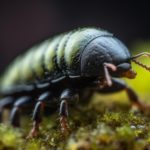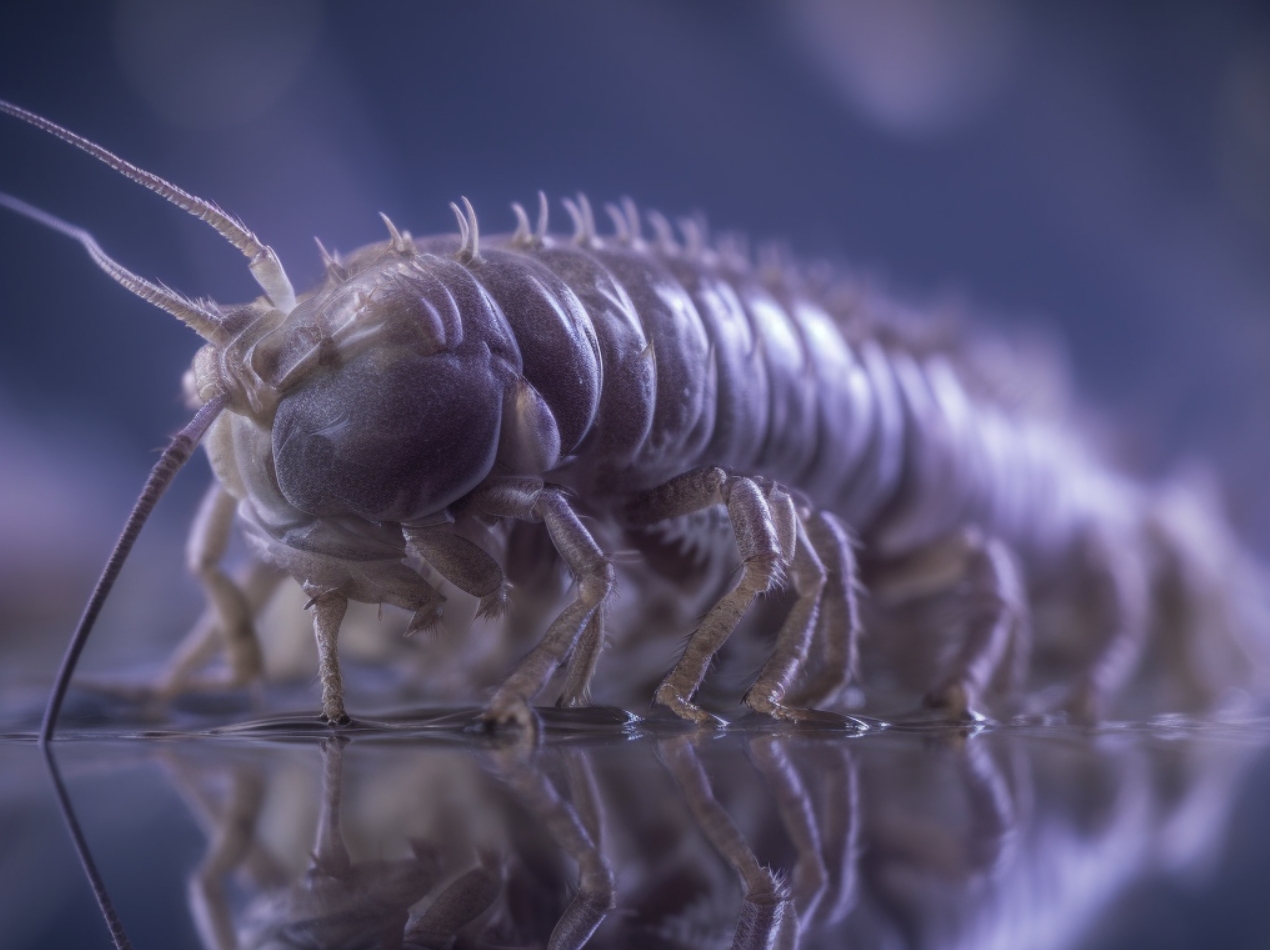Have you ever stumbled across a group of tiny, armored-looking insects scuttling around your home or garden? If so, you’ve probably encountered woodlice. These small, harmless creatures can be a nuisance, and their presence may indicate moisture problems in your home. In this article, we’ll take a deep dive into the world of woodlice, exploring what attracts them, what they like and hate, what kills them, and more. We’ll also provide a step-by-step guide on controlling woodlice, featuring some of the best products available. So, let’s get started!
What are Woodlice, and What Causes Them?
Contents
Woodlice, also known as pill bugs, roly-polies, or sowbugs, are small, terrestrial crustaceans that can be found in damp and dark environments. They are usually gray or brown and are easily identified by their oval-shaped, segmented exoskeleton. Woodlice are attracted to areas with high moisture levels, decaying organic matter, and places where they can hide, such as under rocks or logs.
Now that we know what woodlice are let’s explore what causes woodlice to infest homes and gardens.
Moisture and Decaying Organic Matter
Woodlice thrive in damp conditions and are attracted to decaying organic matter, which is their primary food source. Excess moisture in your home, such as from leaks or poor ventilation, can create the perfect environment for woodlice to breed and multiply.
Hiding Places
Woodlice are nocturnal creatures, and they prefer to stay hidden during the day. They are drawn to places that provide shelter, such as piles of leaves, logs, or bricks, and gaps in walls or floorboards. A cluttered garden or a house with many hiding spots is like a paradise for woodlice.
What Attracts Woodlice and What Do They Like?
Understanding what attracts woodlice and their preferences is crucial for controlling their population. Woodlice are drawn to:
- Damp and dark environments
- Decaying plant matter, fungi, and lichen
- Sheltered hiding spots
Diet and Preferences
Woodlice primarily feed on decaying plant matter, but they also consume fungi and lichen. They play an essential role in breaking down organic material and recycling nutrients in the soil. However, they can also feed on young plants, seedlings, and fruits, which may be problematic for gardeners.
Behavior and Anatomy
Woodlice anatomy and behavior are essential factors in understanding their preferences. Their exoskeleton is porous, which means they lose water quickly and need to stay in moist environments to prevent dehydration. They are also negatively phototactic, meaning they avoid light, and are more active at night.
What Do Woodlice Hate? Strategies to Keep Them Away
To keep woodlice at bay, you need to know what do woodlice hate. The following strategies can help you create an unwelcoming environment for these critters:
- Eliminate moisture: Fix leaks, improve ventilation, and use dehumidifiers to reduce moisture levels in your home.
- Remove hiding spots: Clear away piles of leaves, logs, and other debris from your garden and seal gaps in walls and floorboards to limit their hiding places.
- Use deterrents: Some plants, such as lavender and mint, can repel woodlice due to their strong
- aroma. Placing these plants around your garden or using their essential oils inside your home can help deter woodlice.
- Limit food sources: Regularly remove decaying plant matter from your garden, and keep your home clean and free of food debris to limit their food supply.
- Introduce natural predators: Encourage birds, frogs, and other natural predators to your garden to help control woodlice populations.
What Kills Woodlice? Woodlice Control Solutions
Now that we know what woodlice like and hate, let’s discuss what kills woodlice. There are several effective woodlice control methods and products available, ranging from natural solutions to chemical treatments. Here are some of the top options:
Diatomaceous Earth
Diatomaceous earth is a natural, non-toxic powder made from crushed fossilized algae. When woodlice come into contact with the powder, it damages their exoskeleton and causes them to dehydrate and die. Simply sprinkle diatomaceous earth around areas where you’ve spotted woodlice, and they’ll be gone in no time.
Insecticidal Sprays
Woodlice killer sprays are a fast and effective method for eliminating woodlice. These chemical treatments can be applied to infested areas both indoors and outdoors. Be sure to follow the product instructions carefully, as some sprays can be harmful to humans and pets if ingested or inhaled.
Traps
Woodlice traps can be an effective and non-toxic way to control their populations. There are commercially available traps or DIY options, such as placing a damp, rolled-up newspaper or a halved grapefruit in an area with a known woodlice presence. The woodlice will be attracted to the moisture and shelter, and you can then dispose of them as needed.
Professional Pest Control
If your woodlice infestation is particularly severe or persistent, you may need to call in a professional pest control company. They have the expertise and resources to handle woodlice infestations and can recommend the best treatment options for your specific situation.
Step-by-Step Guide to Woodlice Control and Preferences
By understanding woodlice preferences and controlling their environment, you can effectively manage their population. Here’s a step-by-step guide to help you get started:
- Inspect your home and garden: Identify areas with high moisture levels, hiding spots, and potential food sources. Look for signs of woodlice activity, such as their characteristic excrement, which looks like small, dark pellets.
- Eliminate moisture: Address any leaks, improve ventilation, and use dehumidifiers to reduce dampness in your home. In your garden, ensure proper drainage to prevent standing water.
- Remove hiding spots: Clear away clutter, debris, and decaying plant matter from your home and garden. Seal any gaps in walls, floorboards, and foundations to prevent woodlice from finding shelter.
- Limit food sources: Keep your home clean and free of food debris, and regularly remove decaying plant matter from your garden.
- Introduce deterrents and natural predators: Plant woodlice-repellent plants like lavender and mint around your garden, and encourage birds and frogs to help control woodlice populations.
- Choose a woodlice control method: Based on your specific needs and preferences, select a woodlice control solution, such as diatomaceous earth, insecticidal sprays, traps, or professional pest control services.
- Monitor and reapply treatments as needed: Keep an eye on woodlice activity, and reapply treatments as necessary to maintain control over their population.
- Stay vigilant: Regularly inspect your home and garden for signs of woodlice activity, and address any issues promptly to prevent future infestations.
By following this step-by-step guide and understanding woodlice control and preferences, you can create an unwelcoming environment for these tiny critters and keep them at bay. Whether you’re dealing with a minor nuisance or a full-blown infestation, the strategies and products discussed in this article will help you regain control over your home and garden.
In conclusion, woodlice may be harmless, but their presence can indicate underlying moisture issues in your home and cause distress for homeowners and gardeners. By understanding what attracts woodlice, what they like and hate, and what kills them, you can effectively manage their population and prevent infestations. Stay proactive, and soon, you’ll be free of these pesky little crustaceans!





